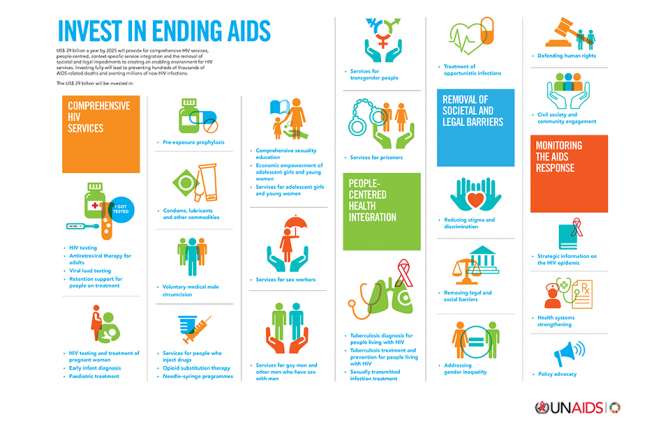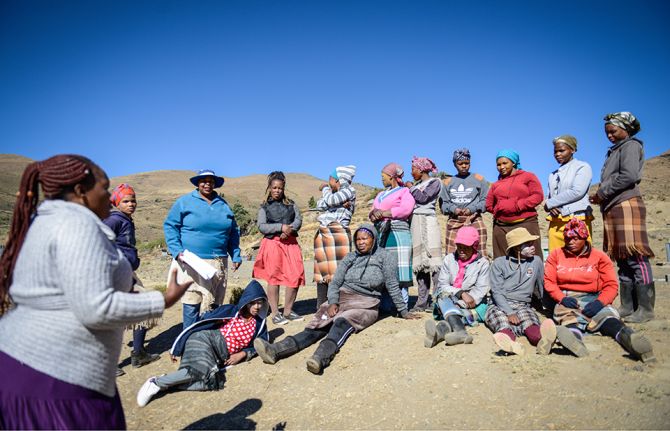

Feature Story
UNAIDS shows that with the right investment we can end AIDS by 2030
26 March 2021
26 March 2021 26 March 2021A new report published by UNAIDS today shows the value of investing fully in the HIV response.
UNAIDS modelling shows that investing US$ 29 billion a year in the HIV response in low- and middle-income countries by 2025 will put the world back on track to end AIDS by 2030. The investment, paid for by both donors and the wealthier countries most impacted by the HIV pandemic, would result in annual new HIV infections falling dramatically, from 1.7 million in 2019 to 370 000 in 2025, and annual AIDS-related deaths falling from 690 000 in 2019 to 250 000 in 2025. The number of new HIV infections among children will drop from 150 000 in 2019 to less than 22 000 in 2025.
In 2016, countries agreed in the United Nations Political Declaration on Ending AIDS to invest US$ 26 billion in the HIV response by 2020. Resources in low- and middle-income countries peaked in 2017 but they started decreasing in 2018, with only US$ 19.8 billion available in 2019—just 76% of the 2020 target. As a result, none of the global programmatic targets set for 2020 were met. And the failure to achieve the targets has come at a tragic human cost: an additional 3.5 million people were infected with HIV and an additional 820 000 people died of AIDS-related illnesses between 2015 and 2020.
“We are not on track to end AIDS by 2030,” said Jose A. Izazola, UNAIDS Special Adviser, Resource Tracking and Finances. “But our modelling shows that spending wisely and focusing investment in the right place will have remarkable results and get us on track to end AIDS by 2030.”
As a result of the failure to meet the 2020 targets, spending will have to be increased, to a peak of US$ 29 billion by 2025.
The investments will be made in a variety of areas. There will be substantially greater investments in HIV prevention services, for which investments will almost double, from the estimated US$ 5.3 billion expenditures in 2019 to US$ 9.5 billion in 2025, with a special focus on key populations, to stop the 1.7 million new HIV infections that still occur each year.
Huge gains can be made in the scale-up of HIV treatment at a low additional financial cost. Modelling shows that a modest 17% increase (an additional US$ 1.3 billion) in resources for testing and treatment by 2025 will enable a 35% increase in the number of people on treatment, to 32 million people.
Spending in societal enablers—factors rooted in society as a whole that modify the effectiveness of HIV programmes: access to justice and law reform, stigma and discrimination and gender equality, including gender-based violence—will more than double, from US$ 1.3 billion in 2019 to US$ 3.1 billion in 2025, and grow to 11% of total resource needs.
“We must not repeat the mistakes of the past,” added Mr Izazola. “The time to invest is now.”



